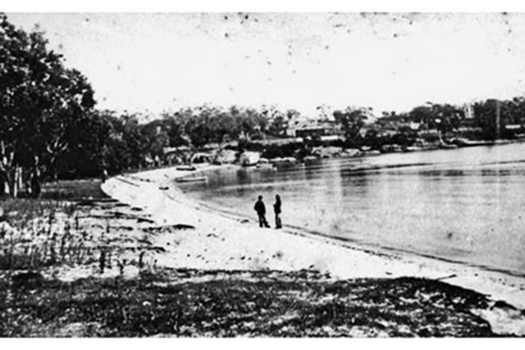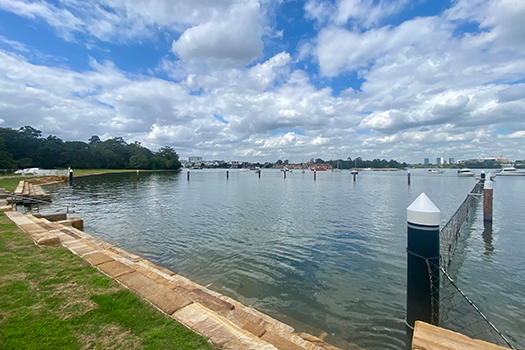History of Putney Park
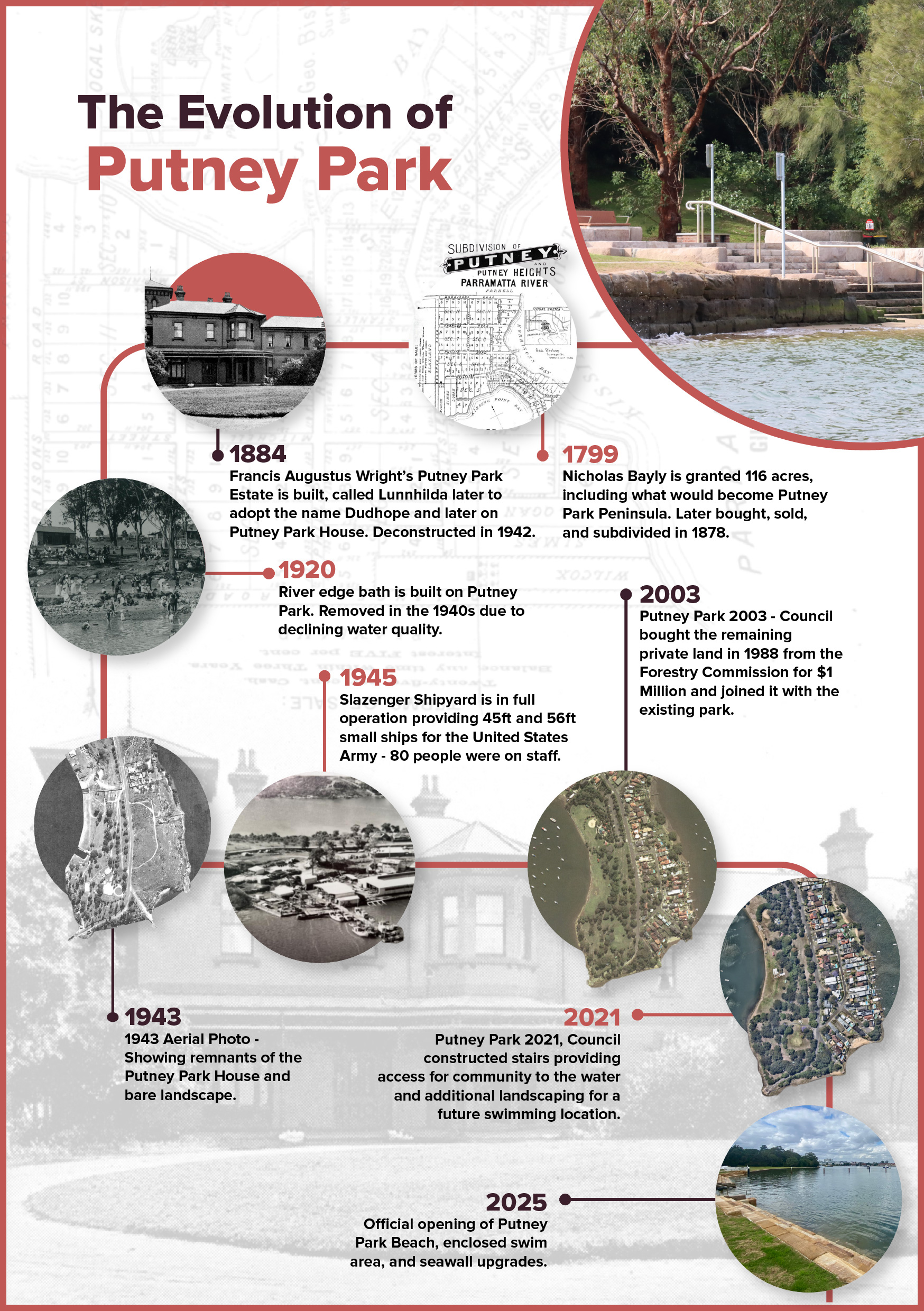
1790s to 1880s - Settlements and subdivisions
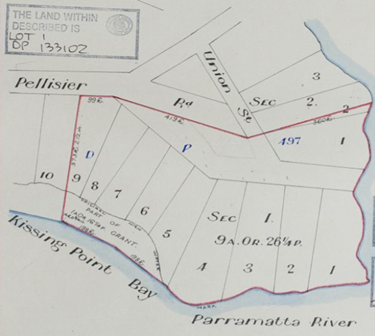
By 1788, settlement at Parramatta had begun and with this followed a destructive chain of events. River modifications were introduced in 1791, including the planting of vineyards and citrus farms, and the industrialisation of the Parramatta and Homebush Bay areas was well underway.
In October 1799, 116 acres were granted to Nicholas Bayly. This included what would become the Putney Park Peninsula, which was later purchased, sold, and subdivided in 1878 by Phillip Billingsly Walker.
Putney Park consists of three parcels of land. Two of those parcels, formerly part of Francis Augustus Wright’s Putney Park Estate, would later come into Council’s possession during the 1920s.
Wright, who had purchased the land in 1884, was a politician and a part of the Redfern Borough Council 1873 to 1887. He was also mayor from 1882 to 1884. The estate centred around the house originally named Lunnhilda, later called Dudhope. Eventually, it was renamed Putney Park House, boasting tiled verandas, balconies on 3 sides, a drawing room, library, 6 bedrooms, bathroom, kitchen, and laundry. This building was later used as a refreshment room.
1920s - Putney Point and Putney Baths
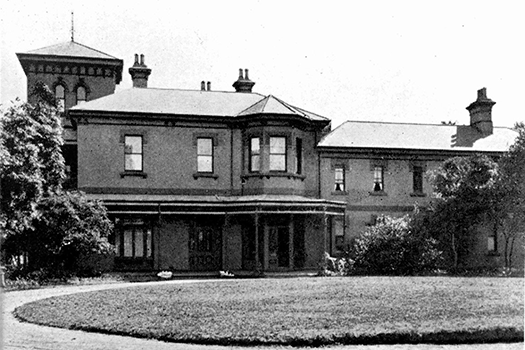
During the 1920s, around 9 acres of lots were acquired by the Municipality of Ryde and would eventually become Lot 1 DP 133102.
Lots 10, 11 and 12 of section 1 DP 497 were transferred to the Minister for Lands of the State of New South Wales becoming Lot 1 DP 320571. This would later be vested as Crown Land in 1928.
While Putney Point was being developed, six swimming and bathing locations were established along its coast between 1904 and 1932. This included the Putney Baths, which were built in 1920 and demolished in the 1940s due to lack of use and declining water quality. Rowing and sailing had also become popular activities along the river.
In 1926, the original Putney Park grounds were opened by the mayor at the time, Alderman C. Dyer, serving as recreation and suitable access to the Putney-Mortlake Punt. Lease of the Putney House was advertised for the sole right to cater on the grounds and was held by Mr David Patterson Gammie for over a decade.
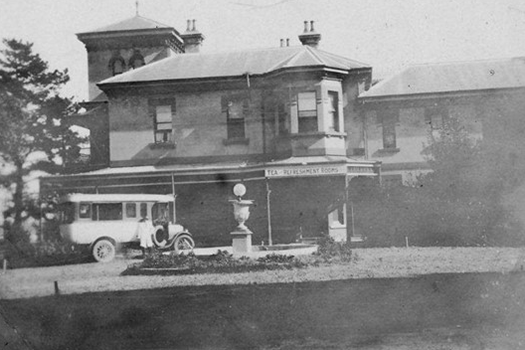
A Vigilance Committee was formed in 1927 to combat vandalism in the park, and to protect trees and property. Committee members were appointed during a Ryde Council meeting, and included Mesdames Callar, MacDowell and Messrs Palmer, Christian, MacDowell, Bradbury, Clark, Miller, Ryan, Dubos, Brown and Callar.
In 1928, Putney-Mortlake Punt was open to vehicles. Later that year, the land on the eastern side of Pellissier Road was offered for sale as the Putney Park Estate.
Throughout the 1930s, Mr Gammie proposed several enhancements to the park's amenities, including constructing a supervisory building with a clear view of the entire area, for use as a refreshment room and dance hall. The baths were extended to 33 yards, old stables were demolished, and a shelter shed was built.
1940s - Putney Park and the Slazenger Shipyard
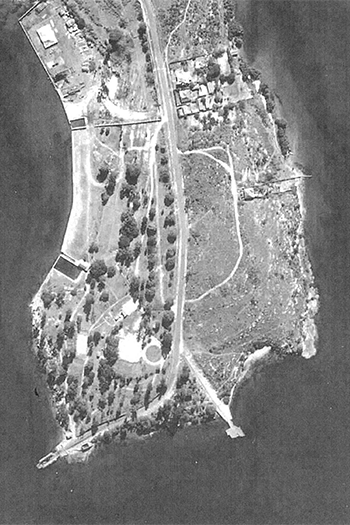
In July 1940, there was a call for tenders for the purchase, demolition, and removal of the residence at Putney Park. There were only three submissions made, which were rejected due to non-compliance requesting a bank cheque payment.
The Parks Committee inspected the park buildings in March 1942, finding them to very damaged due to vandalism and lack of maintenance. Recommendations were made to again call for tenders for the purchase and demolition of all buildings, excluding the picnic shelter sheds and two small semi-domed structures.
By 1942, the small buildings had been demolished prior to the demolition of Lunnhilda/Dudhope in October, with residents collecting bricks from the site to use for their own projects. A report from the Works Committee in April 1942 states that the building were repurposed to house vehicles and equipment used by the National Emergency Services.
During this turbulent period for Putney Park, Slazenger’s Shipyard was being developed on the northern side of the park.
The northern section of Putney Park was first privately held before it was resumed by the Commonwealth Government in 1943. This site was used during the Second World War by the Slazenger group, which contributed to the war effort by creating 45-foot plywood punts for the United States Army.
By March 1943, production was underway with an initial group of 41 men. These 45-foot punts were destined for use in the Pacific where small watercrafts were playing a key role.
As the war intensified, the United States placed more demands on Australia’s ship building industry. The Australian government then formally decided to establish the Putney project as a wholly-owned government works managed by Slazenger on behalf of the Australian Shipbuilding Board.
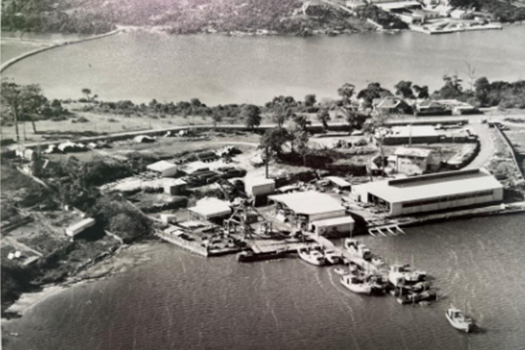
The full workforce at Putney comprised of around 80 shipwrights, painters, and dockers. Retired boat makers were recalled to teach fellow trades workers like cabinet makers, joiners, and carpenters on how to use broad axes, adzes and how to shape and bend timber.
A local Putney boatbuilder, Bill Fisher, was enlisted as a foreman shipwright in charge of the site. Towards the end of 1944, work began on an order of cargo-carrying boats for the Royal Australian Air Force. These boats were 56 feet long with an 18-foot beam, with a 160 horse power diesel motor. Six were completed and another 27 were in the works when the war ended in 1945.
1950s to 1980s - Decline of Putney Park site
Throughout the 1940s, Putney Park continued to be used but became increasingly deteriorated in the 1950s. In the post war years, swimming in the river became increasingly unsafe and was deemed a major health risk.
By the late 1950s, rubbish was routinely dumped there, lantana and weeds had overgrown the area, the baths were in disrepair, and access to the park was only possible via rough tracks.
An article from the Northern Post in 1975 states that "neglect, disinterest spoils Putney Park". The article also went on to highlight the work of one resident and his family who had helped bring the park back to its former glory:
"A fence has been erected around the park with gates that are open from 6 am until 6 pm, an amenities block has been installed and a waiting shed for people using the ferry has been erected. As well as this, a double barbeque has been built and security lights installed."
The resident was most likely Max Lowe who, along with others such as Robert McDowell, became Honorary Rangers in Putney Park.
While the eastern side of Putney Park was in disrepair and unmanaged, the previous Slazenger site on the northern side was picked up by the Forest Commission for its wood technology section. During the industrialisation of Homebush Bay, the area began to see illegal dumping, and the river was referred to as an "open sewer". By the end of the 1900s, factories and industrial plants lined the river from Rhodes to Parramatta.
The Clean Waters Act 1970 was introduced to improve water quality and there was a large shift to converting the river to be aesthetic and recreational based. Significant pollution from the previous decades was present throughout the Parramatta River, with over 210 sites containing untreated or poorly treated wastewater. By 1985, this was significantly reduced to just 19 sites.
In 1988, after the Forest Commission had closed their site, Ryde Council purchased the land and added it to Putney Park.
Newspapers reported that Council decided to pay $1 million for the 2.1 hectares which would be added to Putney, formerly Forest Commission land. Ryde’s Chief Planner had said that Council had been trying to acquire the land for 15 years.
From Council obtainment to present
In the early 1990s, the upper river was dredged so that the introduction of a new river ferry service, the Rivercat Ferry system, could access the full river route we know today.
 Putney Park’s regional playground, water park and climbing frame were installed in 2003, where the Slazenger Shipyard used to be. The land where the Lunnhilda/Dudhope House once stood is now an open field and little remains can be found among the existing foundations.
Putney Park’s regional playground, water park and climbing frame were installed in 2003, where the Slazenger Shipyard used to be. The land where the Lunnhilda/Dudhope House once stood is now an open field and little remains can be found among the existing foundations.
Due to an ongoing lack of governance by the State Government, and in response to community interest, the Parramatta River Catchment Group (PRCG) was formed in 2006. The group is an alliance of local councils in the Parramatta River catchment area, with lead support by Ryde Council and community organisations to advocate for issues related to waterway health and long-term improvements for all of the Sydney community.
The PRCG continues its work today, recognised at a national and international level for improvements to the Parramatta River, and which led to several new river swimming sites. This includes:
- Lake Parramatta
- Cabarita Park Beach
- Bayview Park
- Chiswick Baths
- Dawn Fraser Baths
- and plans for swim locations at Bedlam Bay, Callan Park, and Mort Bay.
Putney Park has seen many changes over the years. With Council's aerial images dating back to 1943, we can track the progress made to see this park transform back to a lively and welcoming space for the local community. By 2024, the enclosed swim area was built, seawall upgrades were underway, and there was plenty of established tree cover in the park.
Today, the site is one of the city’s jewel parklands. Putney Park now boasts a range of amenities, including:
- community events
- two children's playgrounds, including a water play park
- BBQ facilities and shade structures
- natural bushland walking tracks
- and now, a swimming site.
History of Putney Beach and Swimming at Putney Park 1871-2025
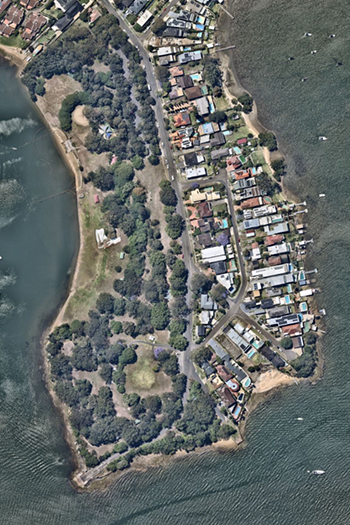
While Putney Park was used mostly for inland recreational activities, its easy access to the cooling river has attracted people from all over for many decades.
Since the inception of the Parramatta River Catchment Group (PRCG) in 2006, continuous water quality monitoring of the Parramatta river has shown Putney to be a safe swimming site and continues to improve.
In 2017, as part of the PRCG's Duba, Budu, Barra: Ten Steps to a Living River – the Parramatta River Masterplan, the group made it their mission to make Parramatta River swimmable again by 2025. This led to a heavy community engagement campaign of more than 2,000 participants supporting new swimming sites along the Parramatta River.
Following this, Putney Park, along with Meadowbank and Kissing Point Park, was investigated for feasibility by Council staff and consultants. This took into account each site's access, amenity, constructability, parking, and water quality. Putney Park was the most viable option of the three sites.
Following this, investment into rigorous water quality testing began collecting the minimum 100-sample requirement for safe swimming assessment before enabling it to be eligible for a swimming site. Collaborating with Sydney Water, the NSW EPA, NSW Health, and swim site councils, a Swim Site Technical Working Group led by the PRCG worked with UNSW to develop a Human Health Risk Assessment for the post-industrialised river system.
This framework took four years to develop and tested in-river sediments and investigated exposures for ingestion, contact and long-term swimming to confirm Putney amongst other new sites on the river. The assessment was the first of its kind for a post-industrialised river system.
A Council resolution supported funding for the construction of a set of sandstone stairs as the first step to provide community access to the 55-metre length of foreshore. In 2021, Council invested $400,000 to construct sandstone stairs for foreshore access to the community for river interaction at the Putney Parkland. Activation for swimming at the site was not included due to completion of water testing at the site.
In late 2022, Council then applied for an NSW State Government grant under the Places to Swim program, which provided $698,475 for Council to construct the swimming enclosure. To support this outcome, Council also prioritised the proposed seawall upgrade works in the swimming site zone to enable a full park upgrade for the new jewel of the city.
On 22 January 2025, Putney Beach officially reopened with more than 300 community members, as another in-river enclosed swimming space, marking a key milestone in the PRCG Parramatta River Masterplan (2018) delivery, becoming the sixth swimming site to be established along the river.
Water quality monitoring and testing continues at the site. To find live updates on water quality testing, refer to the PRCG interactive map.
